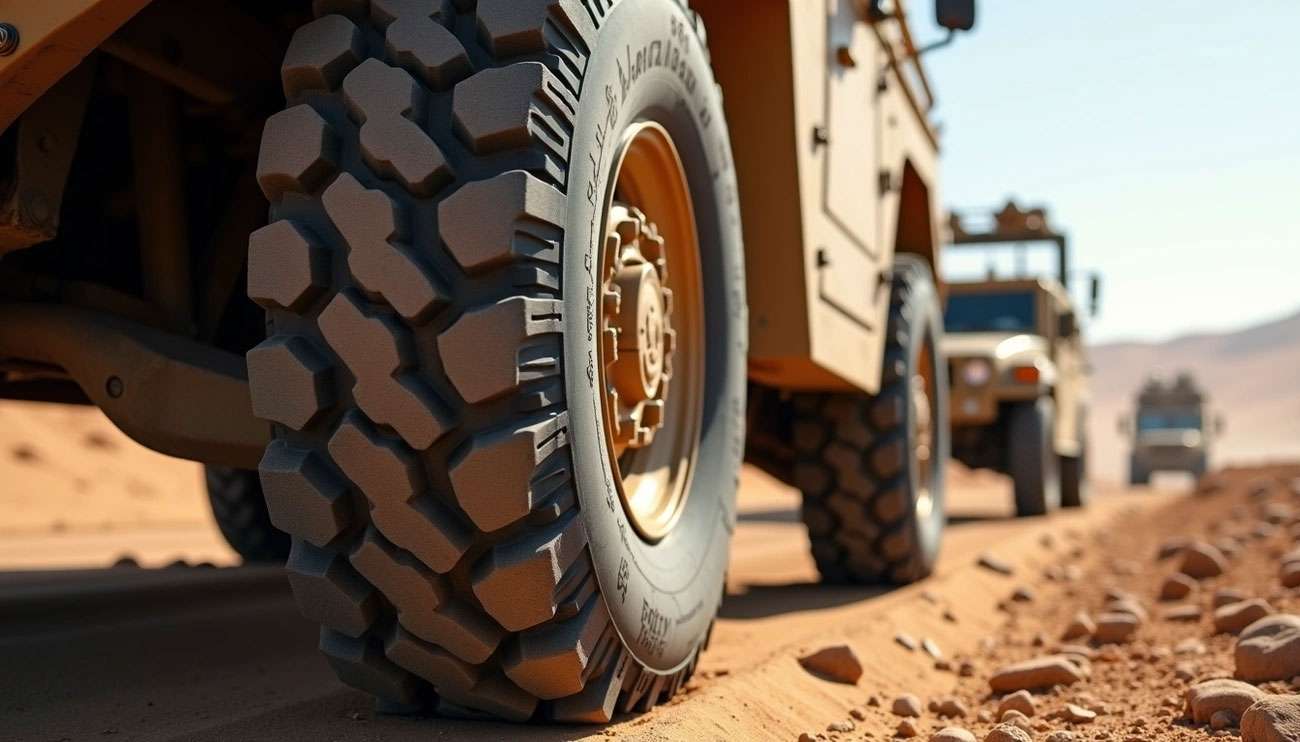
Military tires are engineered for extreme conditions where standard tires simply cannot perform. These specialized components must deliver flawless performance across desert sand and frozen terrain, with zero tolerance for failure. But do military tires justify their higher price point, or are you paying extra for features you don't actually need?
Military operations depend heavily on reliable ground transportation for everything from supply runs to tactical missions. The tire selection for these vehicles directly impacts mobility, safety, and mission success. Advanced technologies like the Michelin Tweel offer built-in puncture resistance that represents a major breakthrough for military applications.
We'll break down what sets military-grade tires apart from civilian options, examine the different types armed forces use, and help you decide if their reputation for durability makes them worth the investment. Looking for Humvee tires or wondering about street legality? We'll cover the essential facts about these combat-tested components so you can make an informed decision for your specific needs.
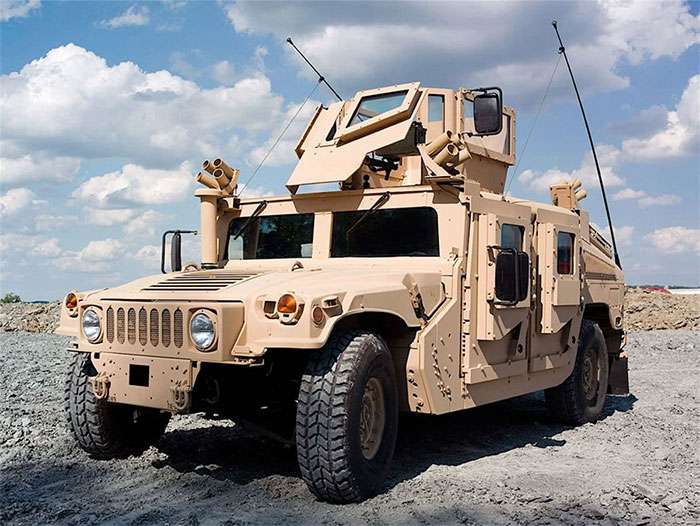
Military tire construction represents advanced engineering specifically designed for battlefield demands. While civilian tires focus on comfort and fuel economy, military-grade tires use specialized materials and construction methods built to handle extreme conditions where failure isn't an option.
Military vehicles carry heavy equipment, supplies, and troops, demanding tires with exceptional load capacity. Poor load ratings result in premature wear, reduced performance, and safety risks. Military tires typically feature reinforced sidewalls with 4-ply construction compared to 3-ply civilian versions, providing superior protection against impacts and damage.
These tires incorporate specialized rubber compounds and reinforced materials like Kevlar that resist punctures, cuts, and abrasions while maintaining strength in harsh environments. This robust construction keeps tires functional despite exposure to sharp debris, punctures, and even enemy fire. Military tires can handle enormous loads while delivering consistent performance in extreme conditions.
Terrain versatility ranks as a top priority for military tire selection. Military vehicles must handle diverse landscapes from rugged off-road terrain to paved roads, often during the same mission. Military tires deliver this versatility through:
Deeper tread depths that provide superior grip on various surfaces
Self-cleaning tread patterns that shed debris to maintain traction
Advanced rubber compounds that perform in extreme temperatures and rough conditions
Military operations often occur in remote, challenging terrain where standard vehicles lose traction. Tires designed for excellent off-road capability feature deep treads and reinforced sidewalls to handle mud, sand, rocks, and obstacles. These features enable military vehicles to reach remote locations while maintaining mobility.
At very low pressures, these tires conform to rocky surfaces, maintaining contact with irregular terrain that would cause conventional tires to lose grip. This adaptability proves essential for mission success in unpredictable environments.
Some military missions require vehicles to operate quietly to avoid detection. Certain military tires are engineered to produce minimal noise during operation. This has led to specialized tread patterns and rubber compounds that reduce road noise and vibrations.
Proper tire pressure adjustment can significantly reduce road noise, which is crucial for reconnaissance and special operations requiring minimal sound signature. This stealth capability maintains the element of surprise during critical missions where detection could compromise objectives or endanger personnel.
Many military tires incorporate technologies providing significant ballistic protection, though they're not completely damage-proof. Run-flat technology stands as the most important innovation, enabling vehicles to continue operating after a tire sustains significant damage.
Yes, bulletproof tires do exist. They allow vehicles to continue driving for distances up to 60 miles after being struck by projectiles, providing time to escape dangerous areas and reach safety. Military forces report that vehicles with run-flat systems can travel 50+ miles at reduced speeds even after complete tire deflation.
Several bulletproof tire technologies are available, including self-supporting tires with thick rubber designed to stop handgun bullets, self-sealing tires with special foam linings, and airless options filled with polyurethane solutions that eliminate puncture concerns. These technologies ensure that during combat situations, where stopping for tire repairs could expose crews to enemy fire, vehicles maintain mobility even after sustaining damage.
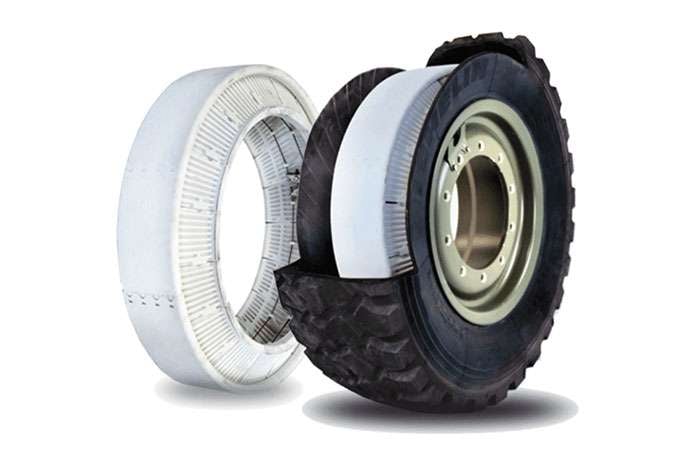
The U.S. military uses several specialized tire types designed for specific operational requirements and combat scenarios. Each type serves distinct purposes, from general transportation to specialized combat missions where failure isn't an option.
All-terrain military tires form the foundation of ground vehicle mobility, offering versatility across diverse environments. These tires feature reinforced sidewalls and deeper tread patterns than civilian alternatives. The 37×12.50R16.5 size commonly found on HMMWV (Humvee) vehicles exemplifies this design, providing excellent durability for heavy loads across various terrain types.
All-terrain military tires excel in multiple environments by combining reinforced construction with aggressive tread patterns. These tires meet the demands of routine operations while maintaining reliability in more challenging conditions.
Combat operations demand tires that keep functioning after damage, making run-flat technology essential for tactical vehicles. The Hutchinson Run-Flat System represents the standard for combat vehicles, allowing continued operation at reduced speeds for 50+ miles even after complete air loss. This capability proves critical during engagements where stopping to change tires could expose personnel to hostile fire.
Run-flat inserts provide structural support that prevents rim contact and maintains vehicle mobility during tactical retreats or emergency evacuations. The technology has become standard equipment on military vehicles operating in high-threat environments.
Military operations in extreme environments require specialized tire solutions beyond standard all-terrain capabilities. Desert operations use tires with wider footprints and unique tread patterns designed for sand traction without digging in. Arctic operations employ tires with deep sipes and special rubber compounds that remain flexible in sub-zero temperatures, ensuring continued traction on ice and snow.
For reconnaissance and stealth missions, low-noise tires with specialized tread patterns reduce sound signature while maintaining off-road capability. These specialty tires demonstrate how military applications push tire technology to handle conditions where civilian tires would fail completely.
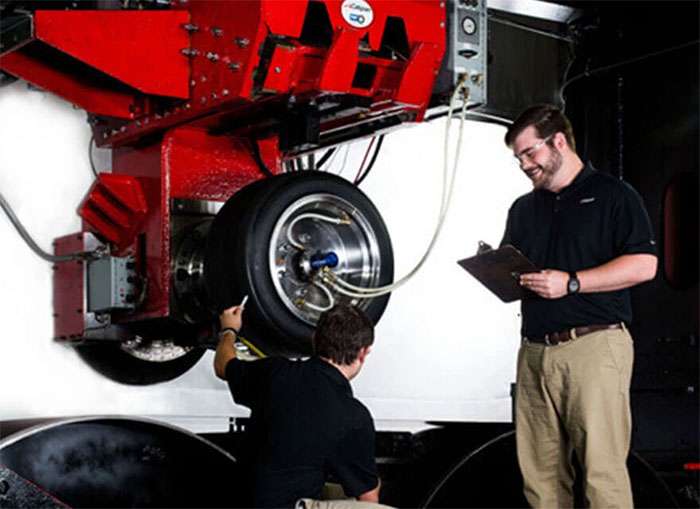
Understanding the advantages and limitations of military tires helps determine if they're the right choice for your specific needs and driving conditions.
Military tires offer several compelling benefits that justify their use in demanding applications:
Superior durability: Military tires last 25-40% longer than conventional off-road tires in harsh conditions. Their reinforced construction with 4-ply sidewalls and advanced materials like Kevlar provides exceptional resistance to punctures, cuts, and impacts. This extended service life reduces replacement frequency and long-term costs.
Terrain versatility: These tires deliver reliable performance across diverse environments from sand and mud to rocks and snow. Their deep tread patterns and specialized compounds maintain traction where standard tires would fail. The ability to operate at very low pressures allows them to conform to irregular terrain while supporting heavy loads.
Reduced maintenance: The robust construction minimizes damage and reduces the frequency of tire-related breakdowns. Run-flat technology allows continued operation after punctures, eliminating emergency roadside repairs in many situations. This reliability proves especially valuable in remote locations where tire service isn't readily available.
Enhanced safety features: Run-flat capabilities and reinforced construction provide peace of mind in critical situations. The ability to continue driving after tire damage can be life-saving in emergency evacuations or remote locations. Ballistic protection features offer security in high-risk environments.
Military tires come with notable tradeoffs that may not suit all applications:
Rougher ride quality: The reinforced construction and aggressive tread patterns that enhance durability create a harsher ride on paved roads. Increased road noise and vibrations can make daily driving less comfortable compared to civilian tires designed for smooth, quiet operation.
Limited availability: Military tires aren't as widely stocked as civilian options. Finding specific sizes or types may require ordering from specialty suppliers or military surplus dealers. This can create delays when replacements are needed urgently.
Higher initial cost: New military-grade tires typically cost more than equivalent civilian options. While their longer service life can offset this premium over time, the upfront investment remains substantial. Budget constraints may make civilian alternatives more practical for some users.
Potential balancing issues: The robust construction and heavy-duty materials can make military tires more difficult to balance properly. This may lead to vibrations at highway speeds and require specialized balancing equipment not available at all tire shops.
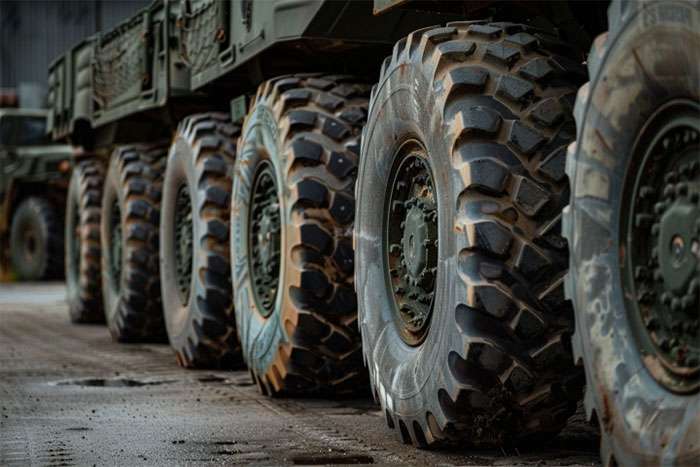
Understanding military tire pricing helps you evaluate whether the investment makes sense for your specific needs and budget constraints.
New military tires command premium prices reflecting their specialized construction and advanced technologies. Goodyear MT/R military tires, a popular choice for tactical vehicles, typically cost $300-500 per tire depending on size and specifications. Run-flat systems add $100-200 per tire to the base price, bringing high-end military tires to $400-700 each.
These prices reflect the engineering and materials required to meet military specifications. While expensive compared to standard off-road tires, the extended service life and superior durability can justify the cost for applications where tire failure could be catastrophic or replacement access is limited.
Military surplus tires offer significant savings while maintaining access to military-grade construction. Used 37×12.50R16.5 HMMWV tires, common for original Hummer H1s, can be found for around $100-200 each, compared to $400+ for equivalent new civilian options. This represents savings of 50-75% versus new military tires or premium civilian alternatives.
Many surplus tires come from vehicles with relatively low mileage since military equipment often gets replaced on scheduled maintenance cycles rather than waiting for component failure. The key is thoroughly inspecting surplus tires for dry rot, cracking, or other age-related deterioration that could compromise safety and performance.
The value proposition depends heavily on your specific use case and requirements. For serious off-road enthusiasts, military surplus vehicle owners, or those operating in remote areas, the combination of durability and run-flat capability can justify the investment. The extended service life means replacement frequency may be half that of civilian tires, potentially making total ownership costs competitive despite higher initial prices.
For casual off-road use or primarily highway driving, standard civilian tires likely offer better value. The ride quality and noise penalties of military tires become more significant with regular street use, while the durability advantages matter less on paved roads. Consider how often you'll use the features that set military tires apart before committing to the higher cost.
Street legality represents a critical consideration when evaluating military tires for civilian use. Understanding the regulations helps avoid legal issues and ensures safe operation on public roads.
Most military tires lack Department of Transportation (DOT) approval for civilian road use. The DOT stamp on a tire's sidewall indicates it meets federal safety standards for highway use. Military tires are typically designed and tested to military specifications rather than DOT requirements, even though they may meet or exceed civilian safety standards in many ways.
Unless specifically marked "DOT Approved" on the sidewall, military tires are not street legal for civilian use in the United States. Law enforcement can issue citations for operating vehicles with non-DOT approved tires on public roads. Insurance companies may also deny claims if an accident involves a vehicle equipped with non-approved tires.
Some jurisdictions allow military surplus vehicles and their original equipment tires to operate on public roads with special permits or registration. These exemptions typically apply to historic military vehicles or those used for specific purposes like parades or shows. The requirements vary significantly by state and local jurisdiction.
Military contractors and government entities may receive exemptions for testing or transporting vehicles equipped with military tires. However, these exemptions rarely extend to private civilian use. Check with your state's department of motor vehicles and local law enforcement to understand what's permitted in your area before installing non-DOT approved military tires.
If you choose to use military tires despite legal restrictions, limiting their use to private property and designated off-road areas minimizes legal risk. Many off-road parks and private trails allow any tire type since DOT approval isn't required off public roads. This lets you benefit from military tire capabilities in appropriate environments.
For vehicles that split time between street and off-road use, maintaining two sets of wheels and tires provides the best solution. Use DOT-approved tires for street driving and switch to military tires for off-road adventures. While this adds cost and storage requirements, it ensures legal compliance while maximizing performance in each environment.

Military tire technology continues to push boundaries with innovations that will reshape how we think about vehicle mobility. Defense contractors are developing next-generation tire systems that promise to deliver unprecedented performance and reliability when failure simply isn't an option.
Real-time monitoring systems are changing the game for military vehicle maintenance. These intelligent tire systems track pressure, temperature, and wear patterns continuously. Companies like Bridgestone are developing smart tire technology specifically for military logistics to ensure vehicles stay mission-ready regardless of conditions. Advanced sensors like the Melexis MLX91805 combine accelerometer, pressure, and temperature monitoring in one unit, dramatically reducing unexpected downtime.
This technology means commanders can spot potential tire issues before they become mission-critical problems. Instead of reactive maintenance, military units can plan repairs and replacements based on actual tire condition data.
Military tire manufacturers are making significant strides in environmental responsibility without compromising performance. The Department of Defense has successfully tested biobased tires that replace 100% of petroleum oil in the tread compound and 60% of the approximately 7 gallons used in manufacturing each tire. Goodyear recently demonstrated a tire made from 90% sustainable materials, with plans to reach 100% by 2030.
The impressive part? These eco-friendly alternatives perform just as well as traditional options in military field tests. This proves you don't have to sacrifice durability for sustainability.
The most exciting developments are happening in materials science. The Navy has reduced F/A-18 tire replacement costs from $100,000 to just $300 using cold spray 3D printing technology. Self-healing rubber compounds are being developed that automatically repair mechanical damage without any manual intervention. These materials could extend tire lifespan dramatically in combat environments where replacement isn't always possible.
These innovations point to a future where military tires become even more reliable and cost-effective, potentially making the technology more accessible for civilian applications as well.
Military tires deliver exceptional performance capabilities that set them apart from standard options. These specialized components offer superior durability, multi-terrain versatility, and ballistic protection that civilian tires cannot match. Their reinforced construction and advanced materials justify the higher price for applications where reliability is critical.
Military tires make sense for specific uses rather than general driving. Their extended service life and reduced maintenance requirements can offset the initial investment over time. Surplus options provide access to military-grade durability at more affordable prices for civilians who need these capabilities.
Keep in mind that military tires come with tradeoffs. They provide a rougher ride on pavement and may not balance as well as civilian tires. Your specific requirements should determine whether the investment makes sense for your situation. Our military tire selection at Performance Plus Tire offers options that balance cost with proven durability if you're looking for reliable performance in demanding conditions.
Future developments in smart sensors, eco-friendly materials, and self-healing compounds will continue advancing tire technology. The fundamental value remains the same - when you need maximum durability and performance in extreme conditions, military tires provide unmatched reliability where failure isn't acceptable.
Military tires offer exceptional durability and specialized features, but their value depends on your specific needs and usage requirements.
• Military tires feature reinforced construction with 4-ply sidewalls and advanced materials like Kevlar, lasting 25-40% longer than civilian tires in harsh conditions.
• Run-flat technology enables vehicles to travel 50+ miles at reduced speeds after complete tire damage, making them invaluable for combat situations.
• Surplus military tires cost around $100-200 each compared to $400+ for equivalent civilian options, offering significant savings for off-road enthusiasts.
• Most military tires lack DOT approval for street use, limiting their application to off-road environments and requiring special permits for road use.
• Future innovations include smart sensors for real-time monitoring, self-healing compounds, and eco-friendly materials that maintain performance while reducing environmental impact.
While military tires excel in extreme conditions with superior puncture resistance and terrain versatility, they provide rougher rides on paved roads and may not balance as well as civilian alternatives. The investment makes sense for serious off-road applications, military surplus vehicle owners, or situations where tire failure could be catastrophic.
Military tires offer exceptional durability and performance in extreme conditions, lasting 25-40% longer than conventional off-road tires. However, they may provide a rougher ride on paved roads. Their value depends on your specific needs and usage requirements, making them worthwhile for serious off-road applications or situations where tire failure could be catastrophic.
Military tires feature reinforced construction with 4-ply sidewalls, advanced materials like Kevlar, deeper tread depths, and specialized compounds. They offer superior durability, puncture resistance, and performance across multiple terrains. Some even incorporate run-flat technology, allowing vehicles to continue operating after sustaining significant damage.
Yes, surplus military tires are available for civilian purchase. Used 37×12.50R16.5 HMMWV tires, common for original Hummer H1s, can be found for around $100-$200 each, compared to $400+ for equivalent civilian options. This offers significant savings for off-road enthusiasts seeking military-grade durability.
Most military tires lack Department of Transportation (DOT) approval for civilian road use. Unless specifically marked "DOT Approved" on the sidewall, they are not street legal. Using non-DOT approved military tires on public roads may result in fines. Special permits may be required for road use in some jurisdictions.
Upcoming advancements include smart tire sensors for real-time monitoring of pressure, temperature, and wear, improving vehicle readiness. Eco-friendly materials are being developed to reduce environmental impact while maintaining performance. Additionally, self-healing compounds and 3D printing technologies are being explored to extend tire lifespan and reduce replacement costs.